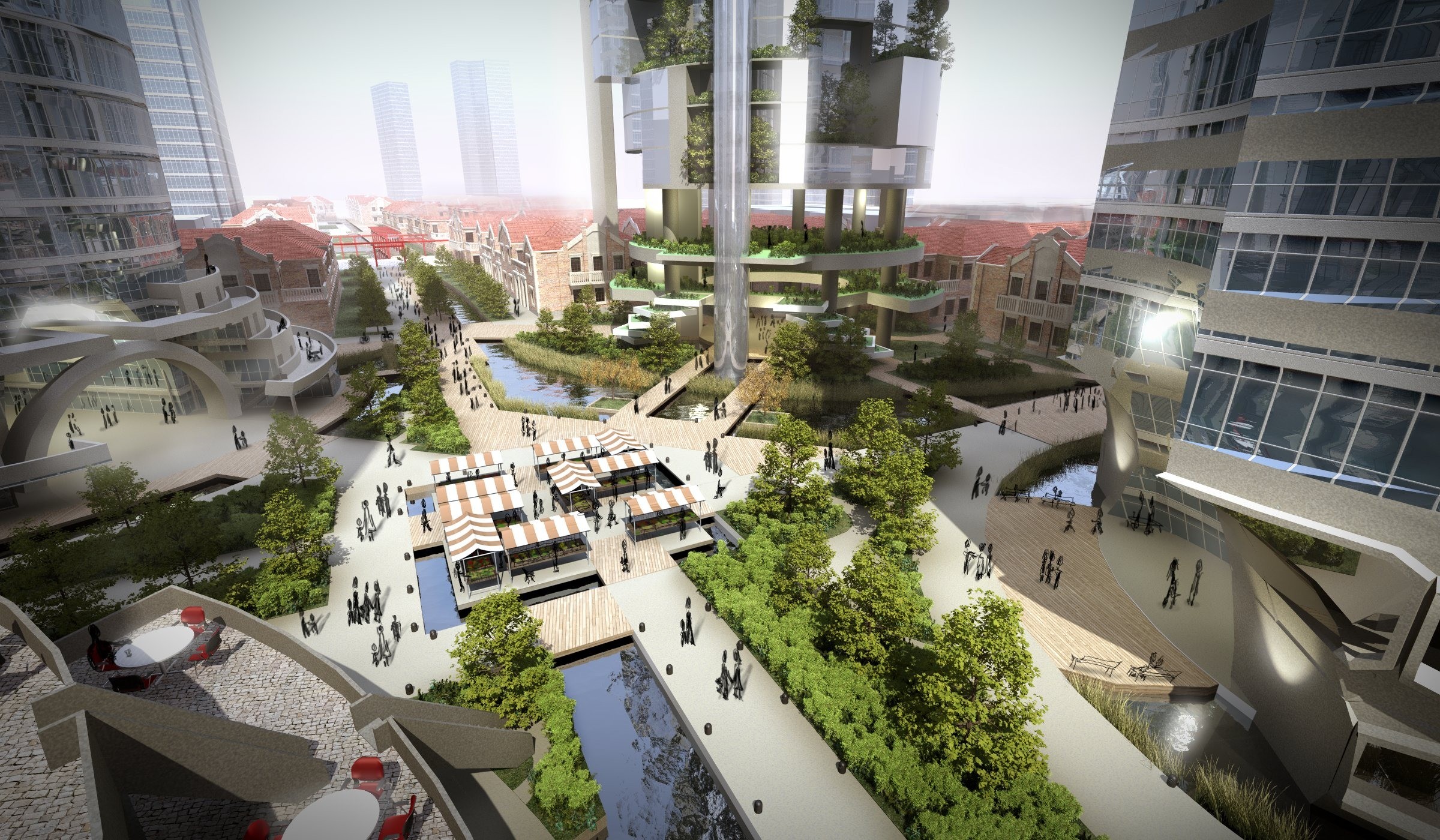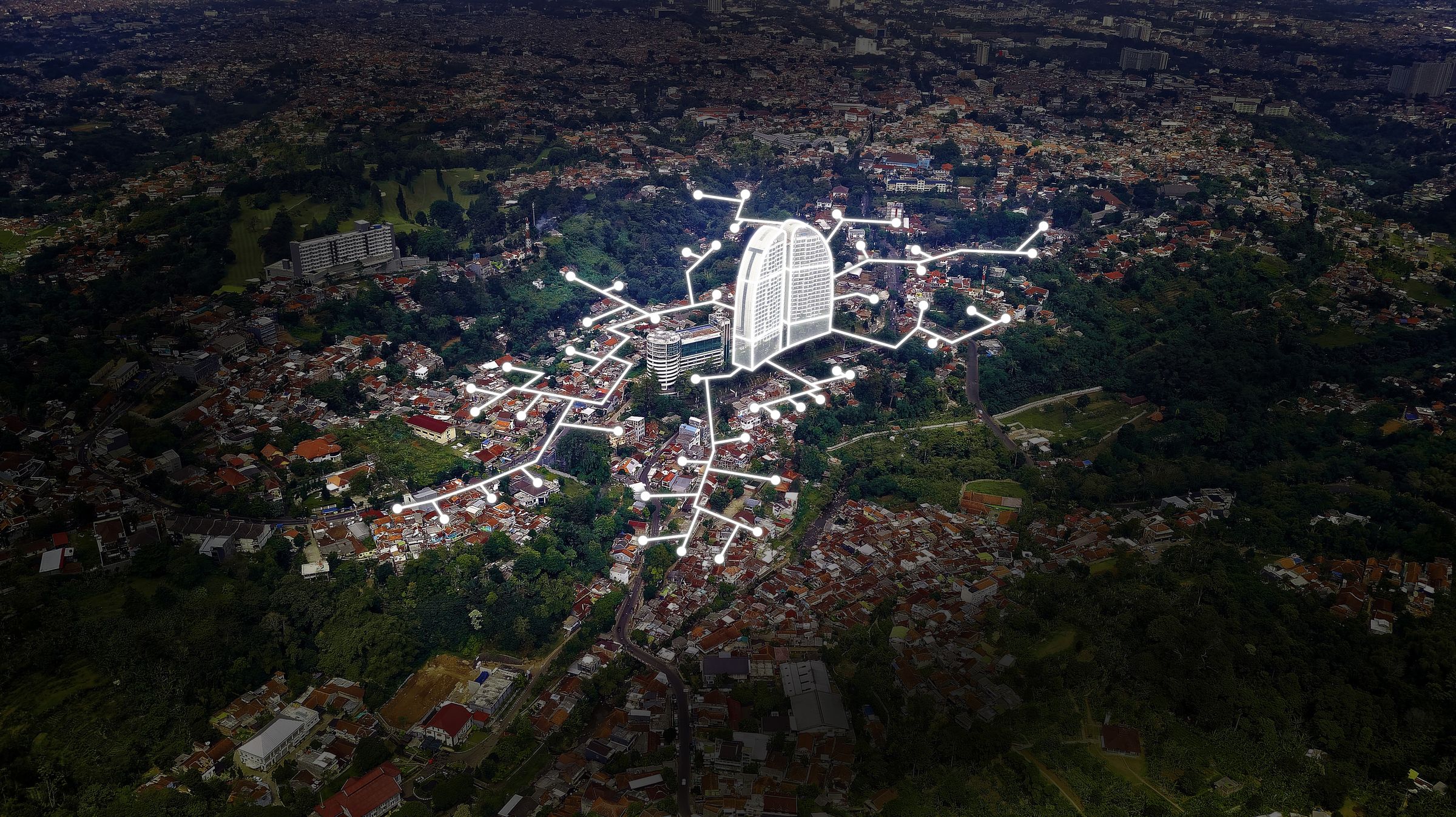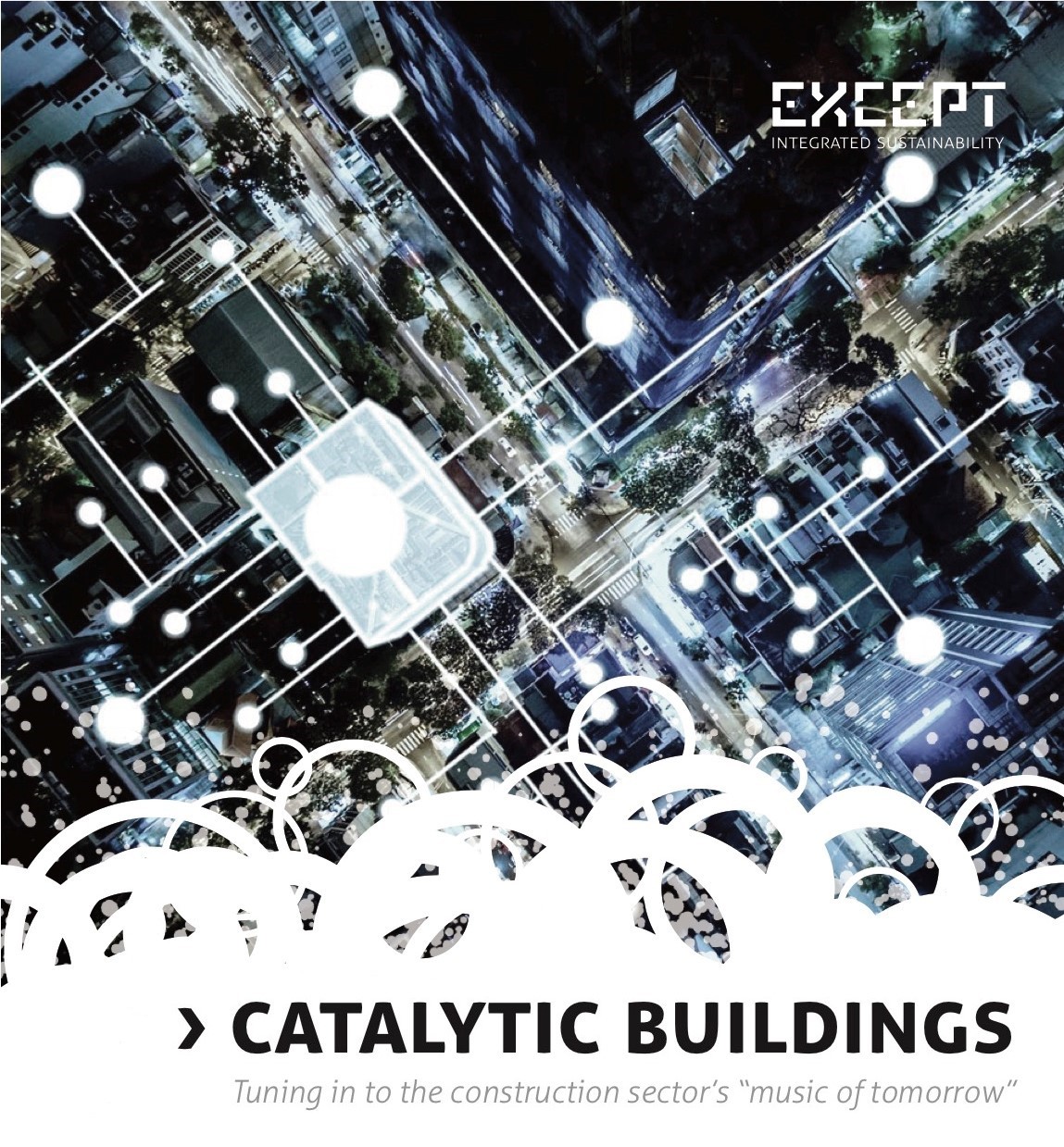Catalytic Buildings are next-generation high-performance buildings that boost the economic, social, and physical sustainability of entire urban areas. Going beyond energy neutrality, a Catalytic Building enhances the system's autonomy, resilience, and equity – from the neighborhood level to city-wide.
Except Integrated Sustainability launches this new approach to support the development of Catalytic Buildings and revolutionize sustainable urban developments. The release of the white paper sets out the reasoning and details of the concept and provides guidelines and practical examples.

The challenges of our continuing urbanization
Our cities are responsible for two-thirds of the global energy demand and 70% of CO2 emissions. According to the United Nations, by 2050 our cities will house over 70% of the global population. The construction industry building these cities consumes a large proportion of the globe's finite resources; 40% of worldwide energy use, 30% of energy-related greenhouse gas emissions, nearly 12% of water use, and almost 40% of waste.
To rise to address the complex challenges to city development, architects, urban planners, developers, and local governments must integrate their approaches and begin to look beyond individual structures. Green architecture, water, energy-neutral buildings, and, more recently, circular buildings are often identified as the silver bullets needed to steer the whole construction sector on the right track.
However, results have proven that building-centric frameworks and certifications, such as BREEAM and LEED, fall short of adequately reflecting the multifaceted challenges of sustainable urban development.
Except advocate for more holistic approaches to sustainability, where governance, communities, and the construction sector collaborate and work together. This white paper makes a case for the pressing need to set the bar higher, turning to integrated perspectives and envisioning a future of high-performance, sustainable buildings that regenerate entire cities.
This white paper introduces Catalytic Buildings - named so as they have the power to create and catalyze a systemic change beyond an individual building.
How Catalytic Buildings support urban sustainability
To truly confront the needs of 21st-century cities, development must steer towards buildings that actively contribute to their surrounding locales. This bolstering of systemic resilience is where the autonomy and self-reliance for sustainability will be found.
For example, will its inhabitants thrive if a building is entirely energy efficient, yet the entire city surrounding it crumbles? Obviously not. So then, why are we solely focusing on internal performance when it is only part of the issue?
If you start thinking about the system and the building as a part of that system, you begin understanding the potential for a neighborhood approach to urban development. You don't need to rewire the entire city to make a significant impact - in this respect, Catalytic Buildings give direction and bolster the performance of smart cities that too often miss the point of how complex systems operate.
A building should be seen as a tool in itself - leveraging a neighborhood's unique and positive aspects to improve it. Catalytic Buildings bridge gaps between urban planning and architecture, going beyond the physical core of the building to enhance the physical, social, and economic values of a city, opening up new, innovative business models for investors and developers.
Download the white paper on Catalytic Buildings
25 februari 2019




